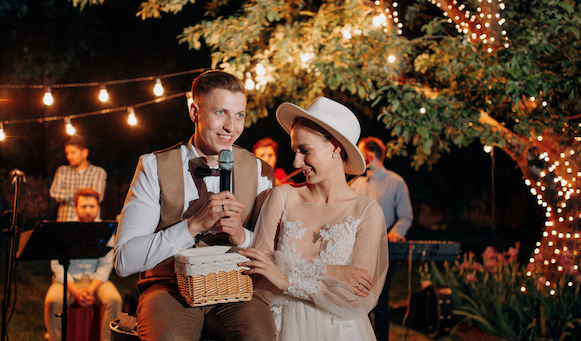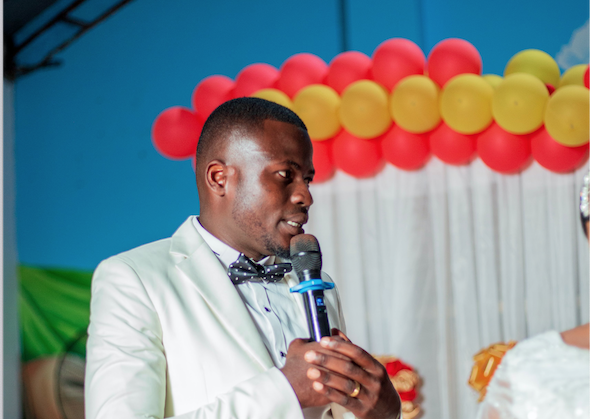
There are only a couple of things that a wedding officiant must include during a civil marriage ceremony for the service to be legal…
One of those things is called the ‘Declaration of Intent.’
This ‘declaration’ is when the couple formally ‘declares’ their intention to marry in front of their officiant and witnesses, hence the name! This part of the ceremony is also sometimes called a ‘statement of consent’ to marry.
The wording for this part of the ceremony doesn’t have to be complicated. All that’s important is that the couple understands the purpose of the ceremony and willingly agrees to wed, and that the officiant confirms it.
One of the most common ways for an officiant to phrase the Declaration of Intent is to simply ask each partner one at a time:
“Do you take this person to be your lawfully wedded spouse?”
This is followed by each partner’s confirmation that yes, they do want to get married… or, ‘I do!’

An alternative wording is a ‘joint declaration,’ in which the officiant asks both people at the same time if they wish to marry. This might be worded as,
“Do you, (Partner One) and (Partner Two), take each other in marriage, vowing to support and love each other as spouses, today, tomorrow, and always?”
A joint declaration of intent is usually answered by both partners in unison, with a shared affirmation to marry… “We do!”
After the couple has publicly stated their desire to marry, the Declaration of Intent is complete and the wedding ceremony continues. Usually, the couple exchanges their personal vows and wedding rings next.
If you’re curious (and we bet you are), the only other thing an officiant must include when officiating a civil wedding is the ‘Pronouncement.’ This is at the end of the wedding ceremony, when the officiant ‘pronounces’ the couple married, as in, ‘I now pronounce you wife and husband!’
Read more about this topic:
Are There Any Specific Words That You Have to Say During a Wedding Ceremony?